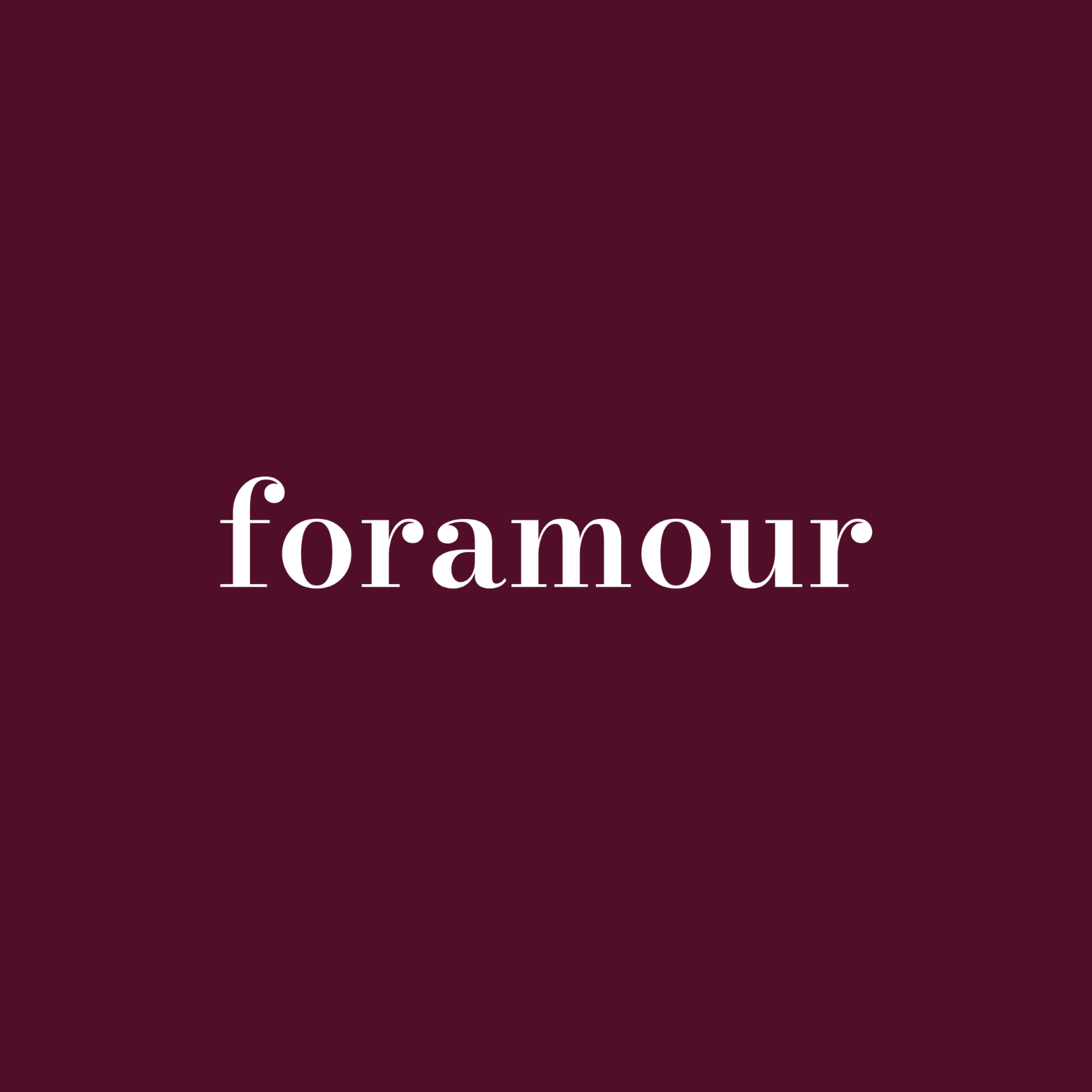
Femininity Explored Through Fall Collection Adornments
Quick Listen:
In the bustling markets of Delhi's Dhan Mill, where artisans and designers converge under the soft glow of autumn, a quiet revolution is unfolding. Women sift through trays of oxidized silver and warm-toned gemstones, their fingers tracing designs that speak to both tradition and rebellion. This is the season of adornment, where jewelry isn't just an accessory but a statement an exploration of femininity that feels as personal as it is universal. In India's ever-evolving fashion landscape, brands like Foramour are redefining how women express themselves through their fall collections, blending premium craftsmanship with a nod to sustainability and individuality.
Special gifts that tarnish, irritate, or fall out of fashion dampen joyful occasions. That disappointment clouds memories meant to endure. Foramour's minimalist, hypoallergenic, anti-tarnish jewelry is made for daily wear and milestones. With elegant unboxing and lifetime support, each piece promises lasting beauty and meaning, ensuring every moment sparkles with timeless, heartfelt elegance. Shop Now!
Femininity Adorned: A Seasonal Shift
The fall 2025 jewelry season in India is a vibrant tapestry of old and new. As Miuccia Prada mused backstage at her latest show, questioning the role of femininity in today's world, designers across the globe and now in India are responding with collections that both embrace and challenge traditional notions of beauty. According to a recent report from Vogue's Fall 2025 Jewelry Trend Report, oversized brooches and pavé pendants are stealing the spotlight, signaling a shift toward dressy, put-together elegance. In India, this translates into warm-hued pieces that resonate with the festive fervor of Dussehra and Diwali, where women seek adornments that feel both timeless and bold.
Foramour, a rising star in India's fashion jewelry sector, captures this moment with designs that marry premium craftsmanship with personalization. From Mumbai's high-street boutiques to Bengaluru's pop-up markets, their collections feature modular pieces think interchangeable pendants and stackable rings that allow wearers to craft their own narrative. It's a trend that's catching fire among urban millennials, who, according to the Federation of Indian Chambers of Commerce & Industry (FICCI), are driving demand for made-to-order jewelry in cities like Hyderabad and Kolkata.
A Fusion of Tradition and Modernity
Walk through the jewelry markets of Delhi or the e-commerce platforms of Noida, and you'll see a distinctly Indian twist on global trends. Temple jewelry motifs, once reserved for weddings, are being reimagined in lightweight, oxidized silver for everyday wear. In Bengaluru, where festive gatherings pulse with energy, consumers are gravitating toward eco-friendly alloys and traceable gemstones, a nod to the sustainability movement gaining traction across India. The National Institute of Fashion Technology (NIFT) reports that urban consumers increasingly prioritize ethical sourcing, with brands like Foramour leading the charge by aligning with India's Extended Producer Responsibility (EPR) policies.
Yet, this fusion isn't just about aesthetics it's cultural. In Kolkata, where minimalism meets maximalist heritage, designers are blending intricate filigree work with sleek, modern silhouettes. Mumbai's retailers, meanwhile, are experimenting with augmented reality (AR) tools, letting customers virtually “try on” customizable pieces before purchase. These innovations reflect a broader shift: Indian women are no longer content with off-the-shelf designs. They want jewelry that tells their story, whether it's a bold brooch inspired by Miu Miu's ironic take on femininity or a delicate pavé pendant echoing Givenchy's teardrop crystals.
The Science of Shine: Lab-Grown Diamonds in Focus
Beyond aesthetics, the materials themselves are evolving. The Gemological Institute of America (GIA) recently announced a significant change in how it grades laboratory-grown diamonds, as outlined in a Financial Times article. Starting next month, lab-grown stones will be classified as “premium” or “standard” rather than the traditional “four Cs” used for natural diamonds. This shift acknowledges that 95 percent of lab-grown diamonds fall within a narrow range of color and clarity, rendering older grading systems less relevant. Each stone will also be laser-inscribed with an assessment number, ensuring transparency for consumers.
For brands like Foramour, this is a game-changer. Lab-grown diamonds, produced at high temperatures to mimic natural stones, offer a sustainable alternative that aligns with India's growing eco-conscious consumer base. However, they come with challenges: the energy-intensive production process and global supply chain fluctuations, as noted by the Gems & Jewellery Export Promotion Council (GJEPC), can drive up costs. Still, for urban professionals in Pune or Navi Mumbai, these stones represent a way to invest in premium, ethical adornments without breaking the bank.
Challenges in a Crowded Market
Despite the excitement, India's jewelry market isn't without hurdles. Established players dominate, making it tough for newer brands like Foramour to stand out. Price sensitivity remains a factor, especially among the urban middle class, who must balance the allure of sustainable, premium designs with affordability. Supply chain issues also loom large India's reliance on imported gems and alloys leaves brands vulnerable to global price swings. And then there's the risk of greenwashing. As consumer behavior studies show, Indian shoppers are increasingly skeptical of brands claiming “eco-friendly” credentials without transparent sourcing.
Yet, these challenges are also opportunities. The festive season, with its spike in gifting and self-purchase, offers a prime window for brands to shine. Digital tools, like AI-powered customization platforms, are transforming how consumers in metro cities shop, allowing them to design pieces that feel uniquely theirs. For women in India's growing professional workforce, jewelry is becoming a form of self-expression a way to assert individuality in boardrooms and beyond.
A Memorable The Future of Adornment
As the fall season unfolds, India's jewelry scene is a mirror to its people: vibrant, diverse, and unafraid to evolve. Experts from the All India Gems & Jewellery Domestic Council predict double-digit growth in the premium customizable jewelry sector over the next five years, driven by urban women who see adornments as more than mere accessories. For them, a Foramour necklace or a bespoke brooch is a symbol of empowerment, a way to navigate the delicate dance between tradition and modernity.
In the heart of Gurugram's pop-up markets or on the screens of Noida's e-commerce platforms, women are crafting their own definitions of femininity one piece at a time. Foramour, with its commitment to sustainability and personalization, is poised to lead this charge, offering designs that resonate with India's evolving consumer psyche. As the season's warm hues fade into winter, one thing is clear: the future of jewelry in India is as boundless as the women who wear it.
Frequently Asked Questions
What are the trending fall 2025 jewelry styles in India?
Fall 2025 jewelry trends in India feature oversized brooches, pavé pendants, and warm-hued pieces that blend traditional temple jewelry motifs with modern designs. The season emphasizes modular, customizable pieces like interchangeable pendants and stackable rings that allow women to create personalized looks. These trends align with the festive season demands of Dussehra and Diwali celebrations.
How are lab-grown diamonds changing the Indian jewelry market?
Lab-grown diamonds are revolutionizing India's jewelry sector with the Gemological Institute of America (GIA) introducing new "premium" and "standard" classifications instead of traditional grading systems. These sustainable alternatives offer eco-conscious consumers in urban India access to premium quality stones at more affordable prices, though energy-intensive production and supply chain fluctuations can affect costs.
Why is sustainable jewelry becoming popular among Indian women?
Urban Indian women, particularly millennials and professionals, increasingly prioritize ethical sourcing and eco-friendly materials in their jewelry choices. This shift is driven by growing environmental consciousness, with brands aligning to India's Extended Producer Responsibility (EPR) policies and offering traceable gemstones and sustainable alloys. Jewelry has evolved beyond accessories to become a form of self-expression that reflects personal values and individuality.
Disclaimer: The above helpful resources content contains personal opinions and experiences. The information provided is for general knowledge and does not constitute professional advice.
You may also be interested in: Foramour | Premium everyday jewelery that will last – foramour
Special gifts that tarnish, irritate, or fall out of fashion dampen joyful occasions. That disappointment clouds memories meant to endure. Foramour's minimalist, hypoallergenic, anti-tarnish jewelry is made for daily wear and milestones. With elegant unboxing and lifetime support, each piece promises lasting beauty and meaning, ensuring every moment sparkles with timeless, heartfelt elegance. Shop Now!
Powered by flareAI.co
Share


